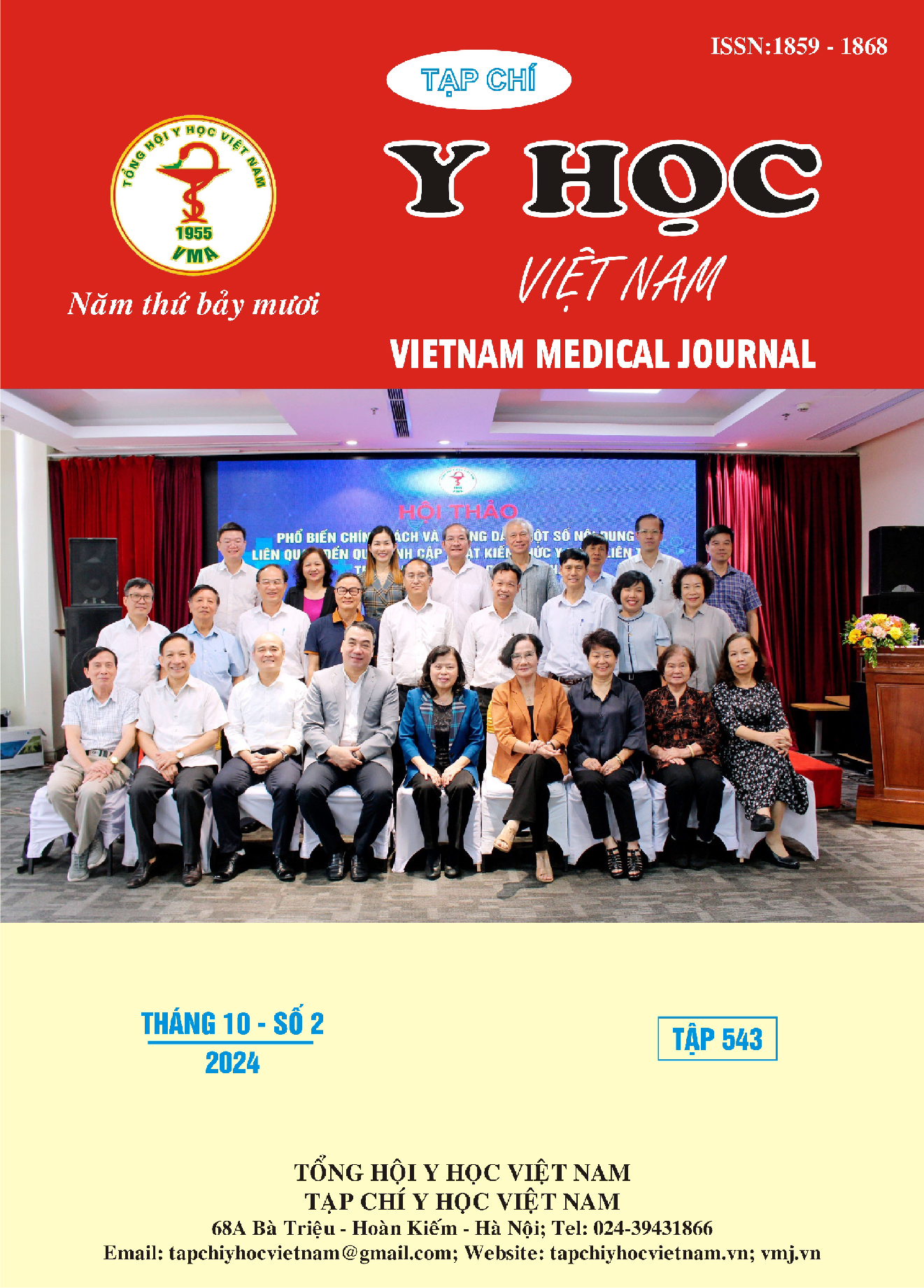CASE SERIES REPORT: MANAGEMENT BASED ON EXPERIENCE OF NEONATAL TETANUS FROM 2016 TO 2022 AT THE NEONATOLOGY CENTER, NATIONAL CHILDREN'S HOSPITAL
Main Article Content
Abstract
Neonatal tetanus, caused by the neurotoxin of Clostridium tetani, a Gram-positive, spore-forming bacterium, manifests as severe muscle stiffness and spasms affecting the central nervous system. Risk factors include unsterile cord cutting, traditional unhygienic practices in cord care, unclean hands during delivery, contaminated instruments, and maternal non-vaccination against tetanus. Prognostic factors such as shorter incubation periods (<5-7 days), short symptom onset (6-10 days), and low birth weight (<2500g) exacerbate disease severity. A case study spanning 2016-2022 at the Neonatology Center of National Children's Hospital involved ten severe neonatal tetanus cases with a mortality rate of approximately 40%. Treatment regimes resulted in an average seizure control period of 24 days, over two weeks of mechanical ventilation, and hospital stays averaging 40 days.
Article Details
Keywords
neonatal tetanus, Clostridium tetani, neurotoxin, risk factors, prognosis, mortality rate
References
2. Ht T, In L, Pt Q, et al. Neonatal Tetanus in Vietnam: Comprehensive Intensive Care Support Improves Mortality: Table 1. Journal of the Pediatric Infectious Diseases Society. 2016;5:227-230.
3. Lam PK, Trieu HT, Lubis IND, et al. Prognosis of neonatal tetanus in the modern management era: an observational study in 107 Vietnamese infants. International Journal of Infectious Diseases. 2015;33:7-11.
4. Dhir SK, Dewan P, Gupta P. Maternal and Neonatal Tetanus Elimination: Where are We Now? RRTM. 2021;12:247-261.
5. Ủy Ban Dân Tộc, UN Women, Các Khuyến Nghị Chính Sách Nhằm Thúc Đẩy Bình Đẳng Giới Trong Các Dân Tộc Thiểu Số ở Việt Nam. 2016; 3-15.
6. Rhinesmith E, Fu L. Tetanus Disease, Treatment, Management. Pediatr Rev. 2018;39(8):430-432.
7. Campbell JI, Lam TMY, Huynh TL, et al. Microbiologic characterization and antimicrobial susceptibility of Clostridium tetani isolated from wounds of patients with clinically diagnosed tetanus. Am J Trop Med Hyg. 2009;80(5):827-831.


